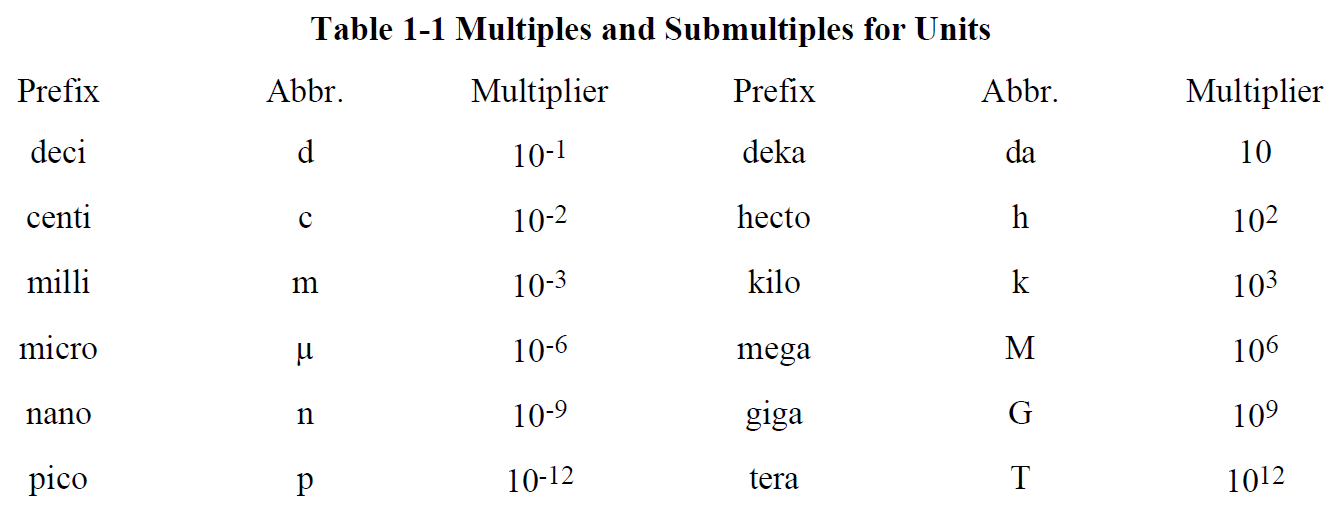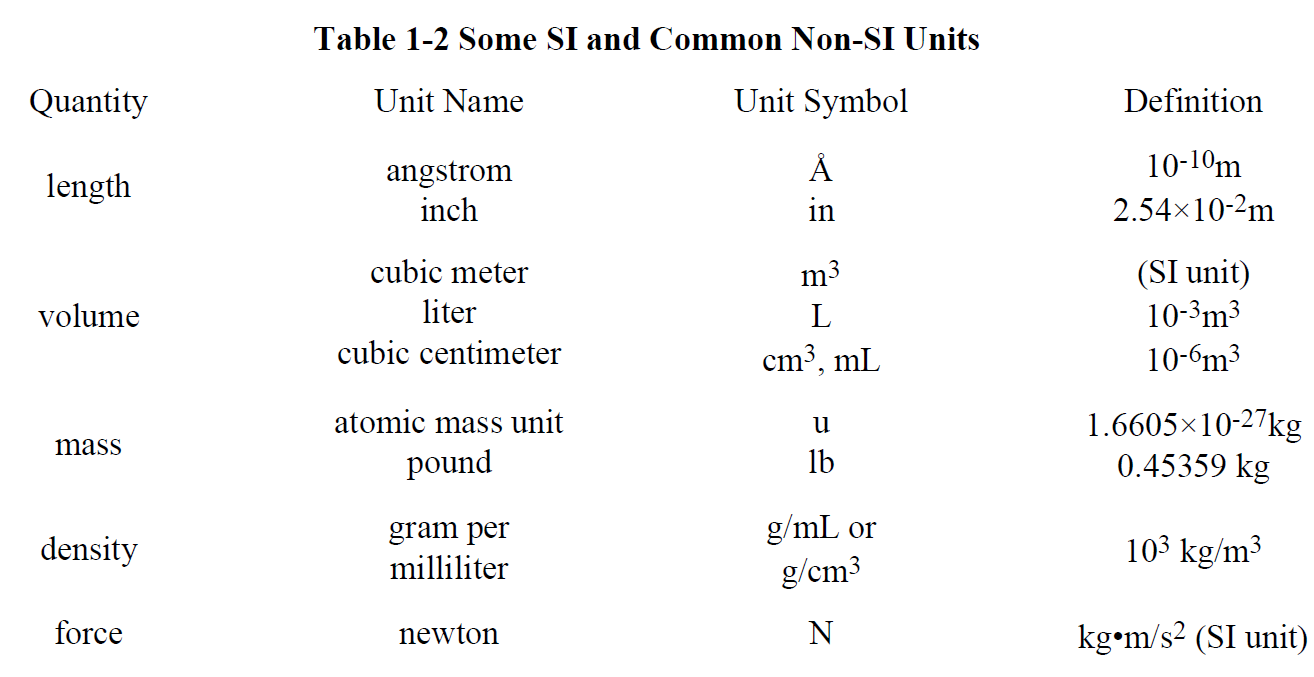
The International System of Units
 المؤلف:
Jerome L. Rosenberg and Lawrence M. Epstein
المؤلف:
Jerome L. Rosenberg and Lawrence M. Epstein
 المصدر:
College Chemistry
المصدر:
College Chemistry
 الجزء والصفحة:
p 5
الجزء والصفحة:
p 5
 24-6-2017
24-6-2017
 2712
2712
The International System of Units
Dimensional calculations are greatly simplified if a consistent set of units is employed. The three major reference dimensions for mechanics are length, mass, and time, but length can be measured in units of inches, feet, centimeters, meters, etc. Which should be used? The scientific community has made considerable progress toward a common system of reference units. This system is known as SI from the French name Systéme International d'Unités. In SI, the reference units for length, mass, and time are the meter, kilogram, and second, with symbols m, kg, and s, respectively.
To express quantities much larger or smaller than the standard units, multiples or submultiples of these units are used, as shown in the Table 1-1. Thus, 10-12 s is a picosecond (ps), and 103 m is a kilometer (km). Since for historical reasons the SI reference unit for mass, the kilogram, already has a prefix, multiples for mass should be derived by applying the multiplier to the unit gram rather than to the kilogram. Thus 10-9 kg is a microgram (10-6 g), abbreviated μg.

Many non-SI units remain in common use; some of these are given in the Table 1-2.
Compound units can be derived by applying algebraic operations to the simple units. For example, the SI units of volume and density are m3 and kg/m3, since


Note that symbols for multiplied units may be separated by a dot or a space, e.g., kg•s or kg s. Symbols for divided units may be written with a solidus or an exponent, e.g., m/s or m•s-1 or m s-1.
Temperature is an independent dimension which cannot be defined in terms of mass, length, and time.
The SI unit of temperature is the kelvin (K), defined as 1/273.16 times the triple point temperature of water (the temperature at which ice, liquid water, and water vapor coexist at equilibrium). 0 K is the absolute zero of temperature.
On the Celsius (or centigrade) scale, a temperature difference of 1°C is 1 K (exactly). The normal boiling point of water is 100°C, the normal freezing point 0°C, and absolute zero -273.15°C. On the Fahrenheit scale, a temperature difference of 1°F is 5/9 K (exactly). The boiling point and freezing point of water, and absolute zero are 212°F, 32°F and -459.67°F, respectively. Conversions from one temperature scale to another make use of the following equations:

In these equations, we have used a particularly convenient notation: t/°C, T/K, and t/°F refer to the numerical values of temperatures on the Celsius, Kelvin, and Fahrenheit scales. By dividing the temperature in degrees Celsius by 1°C, we obtain a pure number.
 الاكثر قراءة في مواضيع عامة في الكيمياء التحليلية
الاكثر قراءة في مواضيع عامة في الكيمياء التحليلية
 اخر الاخبار
اخر الاخبار
اخبار العتبة العباسية المقدسة


